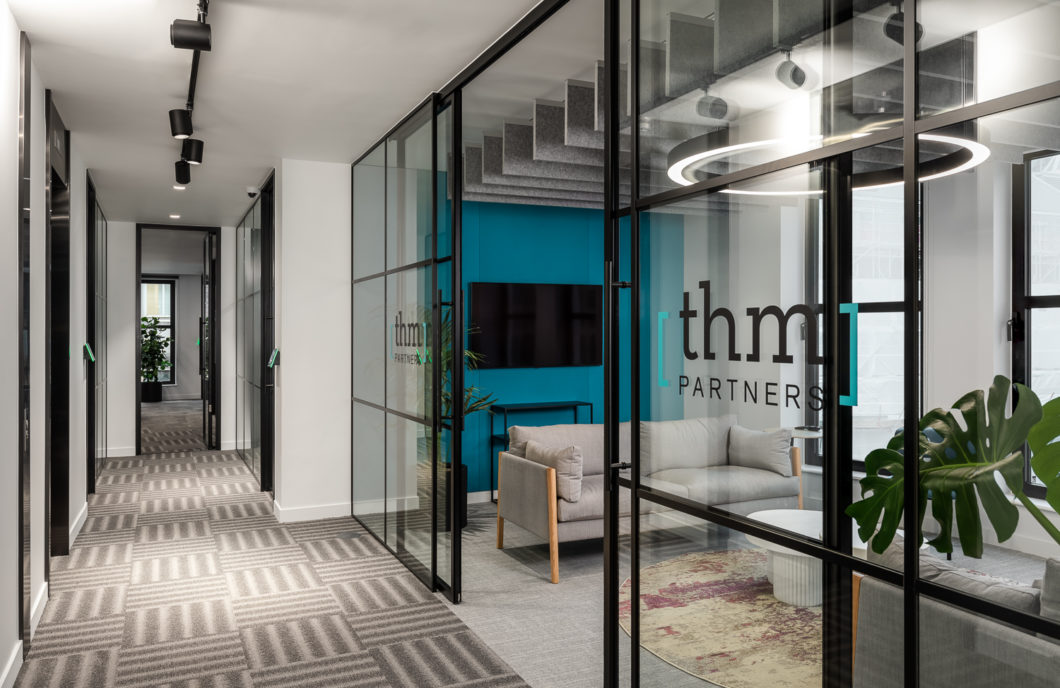Moving office can be stressful for everyone —ask these questions to ensure your employees are on board too.
By Making Moves London
March 27, 2024
Moving office can be a really exciting time for you and your employees. Fresh surroundings with a whole host of new coffee shops, lunch spots and after-work drink hangouts can go a long way to giving everyone a boost.
However, moving office can also be a time of uncertainty for your employees as it may mean a change to their working lifestyle. To minimise feelings of uncertainty, we recommend offering a chance for them to give you feedback in a timely and detailed manner. Here are our top questions to ask staff when moving office, to ensure the smoothest transition possible.
The first, and perhaps most important, question to ask your employees when moving office is which locations are suitable for them. For many people, the commute is an important factor when choosing a company to work for. Moving your office from one end of London to another may significantly impact those commuting from outside of the city, adding an extra hour or more to their working day (yes, even despite the new Elizabeth Line!).
While it is unlikely that you will find a location that benefits everyone, collecting information about the areas your employees are willing to travel to will help you make a relocation decision that works for as many people as possible.
We also recommend asking your employees how they commute to work. You may need to assess your office location on factors such as walking routes, public transport connections and parking and cycling facilities. Location preferences will vary depending on how your employees prefer to get to work each day.
As the physical location of a new office can’t be changed like a floorplan or furniture and fittings can, consider location as a critical factor when deciding the location for your next office.
Similar to the above, are there areas which staff would prefer to avoid?
This might include spots which staff know are very difficult for them to commute to via public transport or areas which put them a considerable distance from schools, shopping, or other facilities like doctors and dentists. Some locations might be out of reach of existing season tickets on trains, the London Underground, or unachievable by cycling, for example.
Don’t second-guess this based on your own information – employees may not know specifically which employees are ideal for them, but they’ll likely have an idea of which locations will cause them inconvenience – whatever the reason may be.
There are many different working environments to choose from, ranging from open-plan, coworking spaces to self-contained, private offices, and everything in between.
When considering your next office move, it is important to consider which working environments are suitable for your employees and the type of work they are doing. While some of your employees may enjoy working collaboratively within an open-plan space, others may value quiet spaces where they can focus without distraction. This will likely impact your required floor plan, so build it into your considerations early on.
For growing teams or larger businesses, a mix of open-plan and private spaces can provide the flexibility needed to accommodate different working styles. Consider areas for collaboration alongside quiet zones for focused work, ensuring your office supports productivity across all departments.
Choosing a working environment that suits the preferences of your employees can lead to a significant boost in productivity. When you have a clear idea of which working environments are needed, you can use our Office Space Calculator to calculate how much space you need.
Satellite offices, or access to coworking spaces closer to home have become more popular, particularly when staff are presently working remotely or in hybrid situations.
It’s worth asking staff, especially those who commute large distances or who frequently work from home if access to a satellite office would be preferable. Based on the physical location and working patterns of your employees, a ‘main’ head office may be preferable, but if staff would prefer to work across multiple smaller locations, downsizing the main office may be more cost-effective – the so-called ‘hub and spoke’ model.
As coworking spaces continue to prove popular, it might be tempting to share a new office space with other businesses, whether for cost savings, greater access to similar-minded business people, furthering collaboration, or even for sales and growth reasons.
For larger organisations, having dedicated office space often provides the privacy, security, and scalability needed to grow. However, some industries benefit from collaboration opportunities when sharing a building or space with complementary businesses.
Certain amenities may be crucial for your employees to deliver their work, such as access to a suitable and ergonomic office desk and chair, whether they are assigned 1:1 or available as hotdesks. Beyond this, however, there are many amenities that do not immediately spring to mind. These could be things that your employees value about your current office or things they would really like to have in a new office.
Access to tea and coffee facilities often appear high on employee surveys as a desired amenity in any workplace. Whether you provide a full-works coffee cart or simply a kettle and the basic ingredients, access to hot drinks throughout the day is a must-have for many offices.
Other amenities that frequently appear in employee surveys include access to private meeting rooms, high-tech reception spaces, functional printing facilities, the benefits of office plants and a cafe or canteen within walking distance.
If your business is growing and you’re moving to a bigger or better office space, it may be the perfect opportunity to expand the amenities you offer your staff by asking the additional question, “what should we look for that we don’t currently have?” You may not know what is important to your employees until you ask the question!
Moving office is a great time to take stock of the office inventory and both get rid of old items, furniture and tidbits that might be causing clutter, or be outdated. It’s also an ideal time to invest in new equipment, technology, or anything else that employees might need in order to work most effectively.
Ask staff what they need to do their jobs – and note this might have changed since the last office move – and ask the question across all teams, departments, and levels of seniority. Remember to allow some room to grow, whether buying IT or networking equipment (build in some flex for an increase in headcount), new tech and conferencing equipment (as more employees work remotely and flexibly from home), and even day-to-day items like coffee machines, which you may need less of if fewer are in the office together.
As well as core working equipment such as seating, furniture, and technology, are there other items – recreational, for team building, cultural, or even just aesthetics that staff would like to see in the office? While you’re relocating, ask staff whether they’d like to see new artwork, furniture, fittings, or anything else they can think of in the working environment that will make them more effective and more engaged at work.
Keep the question open-ended, and encourage staff to take time to answer in a way that will make them happy and engaged with the office move — be it an office slide, bowling alley, cinema room or another wild idea. It might just be that employees want something simple like decaf coffee — you won’t know until you ask!
Ask staff to describe what their ideal working environment looks like – from decor and furnishings to location, room layouts, and overall vibe. Ask the question in an open way, even just a few words can help to build a picture of how the new office space will look and function. By getting involvement and input from all parties, the best environment can be designed and staff will feel like they left their mark on the office.
Try to make this more about cultural and emotional words and phrases rather than specific items, so ‘welcoming’, and ‘open’ rather than ‘games console’ and ‘free beer fridge’ will help you create a mood board for how the new office should feel.

Budget is always a top concern when relocating an office, but ask staff the question about dream offices – what would staff include, if they could have anything? You might be surprised to find It might not be cliché things like pool tables, and may be more affordable, achievable, and worth the investment based on the impact it will deliver.
Our office fit-out experts might just be able to make your employees’ new office dreams a reality. Maybe it’s a dog creche, a metaverse meeting space, or just a really cool kitchen — use your office relocation to really futureproof and make your office space functional and impressive for all that use it.
An office move often requires a change in employment contracts given a variation in the place of work. Ensure that staff know how this may affect them, and speak to staff about any issues they might have such as:
Relocating an office is likely to be a compromise that won’t please everyone, so take some extra care with the most impacted, and let their voice be heard.
If staff are impacted by the office move, is there support the business can offer to make the move an easier process for all? Whether it’s support with travel arrangements – for example subsidised public transport tickets, changes to flexible working and core working hours, or additional support like job-sharing or installation of home tech like broadband. By involving and supporting employees, having honest and open discussion, your next office relocation can be more of a success.
While it can be easy to fall into the trap of asking closed and possibly leading questions, make sure the conversation about moving office is a two-way one. Ask staff if they have any other concerns, requests, or things they’d like to discuss about the office relocation. By speaking to employees face-to-face you’ll get a much better read on their true thoughts, and give them the opportunity to speak and get to the bottom of any issues around the move.
By getting employees involved from the beginning of the process and encouraging open conversation about the move, you’ll get better staff retention during and after the move, and a chance to address any issues, large or small.
After asking staff about the move, make time to review the responses and respond to them where appropriate.
Key points:
If you’re moving office soon, or are only just starting to think about office relocation, we have developed a seven-stage process to help make office moves as straightforward and stress-free as possible.
By exploring the above questions with your employees, you can ensure that your new office will be a resounding success. Importantly, you’re also showing your employees that you value their input and contribution.
At Making Moves, we understand the importance of involving employees in every step of an office relocation. A recent project with THM Partners, a leading independent restructuring practice, showcased how tailoring the process to employee needs can create a thriving workspace that inspires collaboration and productivity.
THM Partners approached us to find a new office space that would accommodate their growing team while encouraging employees to return to the office. After identifying a location that matched their requirements, we managed the entire fit-out process to ensure the space reflected their values and priorities.

To meet the needs of their employees, we helped design a workspace featuring focused working areas, ‘Think Tank’ rooms for brainstorming, informal collaboration spaces, and client meeting rooms. Recognising the importance of modern working habits, we also incorporated private ‘Zoom rooms’ to support virtual meetings. Acoustics were a top priority, ensuring staff could maintain privacy during sensitive discussions while feeling comfortable in their environment.
This tailored approach highlights the importance of asking the right questions when planning an office move. By understanding what their employees valued most, THM Partners were able to create a space that not only supported their business goals but also fostered a sense of community and collaboration among their teams.
View the full case study here, or explore our case study archive to see how we’ve supported other businesses make their move.
Interested in chatting with our relocation experts about a potential office move? You’re welcome to get in touch with us and it’s our goal to make the process smooth sailing.

? Source, negotiate and manage entire office moves.
? Dispose, sublet or redesign your office.
?️ Professional, independent support.